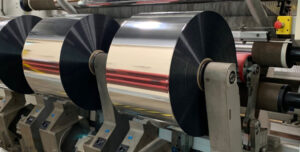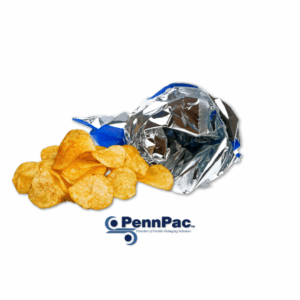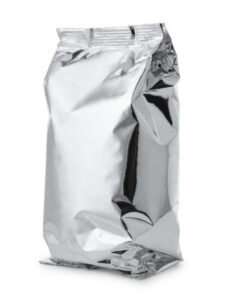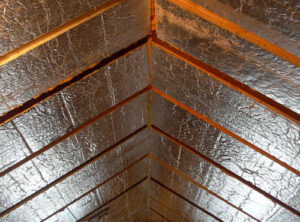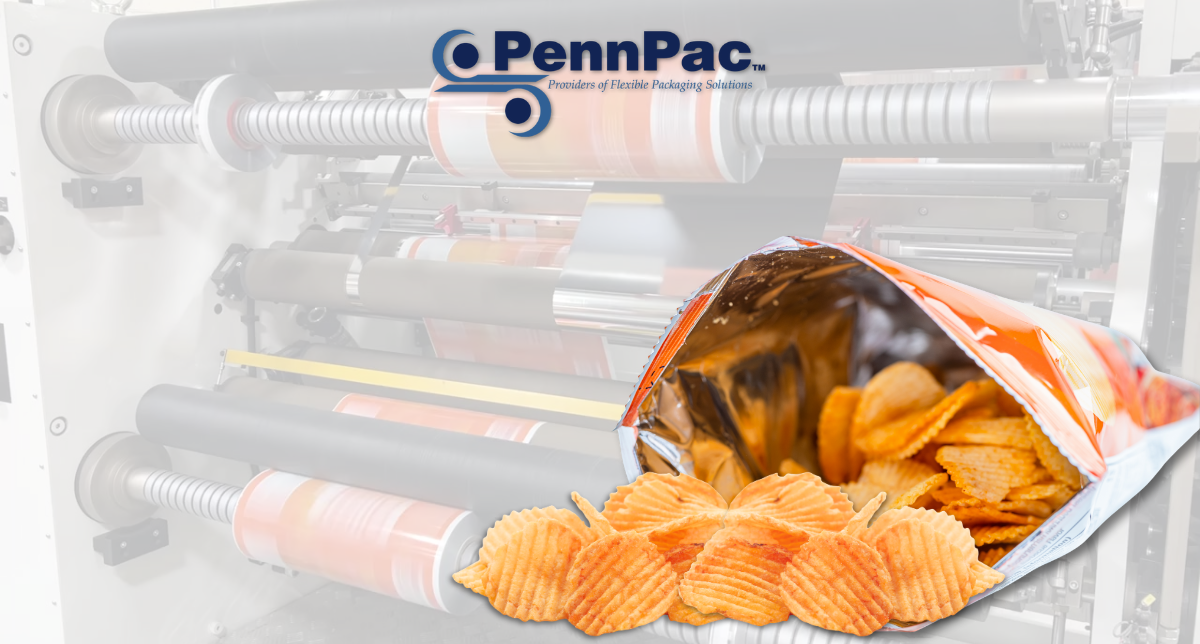
Key Takeaways
- Metallized films enhance packaging with superior barrier properties and aesthetic appeal.
- They are used across various industries, including food, pharmaceuticals, and consumer goods.
- Advancements are being made to improve the recyclability and sustainability of metallized films.
- Future trends point towards increased demand for eco-friendly and premium packaging solutions.
Table of Contents
- Introduction
- Metallized Film Overview
- Types of Metallized Films
- Metallized Packaging
- Applications of Metallized Films in Packaging
- Advantages of Metallized Films in Enhancing Packaging Performance
- Environmental Considerations
- Future Trends in Metallized Films and Packaging
- Conclusion
- FAQ
Introduction to Metallized Films
Metallized films are coated with a thin layer of metal, commonly aluminum. This coating is applied via a process known as vacuum metallization, which helps to create a highly reflective and functional surface. These films play a crucial role in modern packaging, enhancing not only the aesthetic appeal but also the barrier properties and durability of products. The aim of this blog post is to provide a comprehensive overview of metallized films and explore how they improve packaging performance, particularly in terms of freshness and shelf life.
For example, Biaxially Oriented Polypropylene (BOPP) film is metallized through the vacuum deposition process. This technique applies a very thin layer of aluminum onto the surface of the film to improve its barrier and optical properties. Here’s how it works step by step:
-
Film Preparation
The base BOPP film is first produced through biaxial orientation (stretching in both machine and transverse directions).
Before metallization, the film surface is usually corona treated or flame treated to increase surface energy and adhesion.
-
Loading into Metallizer
Large rolls of BOPP film are loaded into a vacuum metallizer machine.
The chamber is evacuated to create a high vacuum environment (around 10⁻⁵ to 10⁻⁶ torr). This is critical to ensure proper deposition of the metal.
-
A torr is a unit of pressure, commonly used in vacuum science.
-
1 torr = 1 mmHg (millimeter of mercury) at 0 °C
-
-
Metal Evaporation
Thin aluminum wire (or sometimes other metals like zinc or chromium for specialty applications) is fed into electrically heated boats or crucibles.
The aluminum is heated until it vaporizes inside the vacuum chamber.
-
Vapor Deposition
The vaporized aluminum condenses onto the moving BOPP film surface as it passes over a cooled drum.
This creates a uniform metallic layer only a few nanometers thick (typically 300–500 Å, or 30–50 nanometers).
-
Film Winding
The metallized film is rewound into rolls, with continuous monitoring to ensure proper optical density (OD), which is a measure of how much light is blocked and correlates with barrier properties.
Key Outcomes of Metallized BOPP Film
- Barrier Enhancement: Metallized BOPP has improved moisture, oxygen, and light barrier properties when compared to plain BOPP.
- Aesthetics: It gives the film a shiny, reflective, metallic appearance, widely used in snacks, confectionery, and labels.
- Cost Efficiency: Metallization provides barrier performance similar to foil at a fraction of the cost and with greater flexibility.
Metallized Film Overview
Composition and Structure
Metallized films are primarily composed of various polymer substrates. Common materials include:
- Polyester (PET)
- Biaxially Oriented Polypropylene (BOPP)
- Cast Polypropylene (CPP)
- Nylon
These substrates are intricately coated with a nanometer-thin metal layer through the vacuum metallization process. This method ensures a uniform and continuous application of the metal, vital for creating effective barrier films. The metallized layer not only enhances visual appeal but also significantly improves the film’s functionality.
Manufacturing Process of Metallized Films
The process of vacuum metallization involves several key steps:
- Cleaning and Priming: The base film is meticulously cleaned and primed to ensure optimal adhesion of the metal layer.
- Heating Aluminum: Aluminum is placed in a vacuum chamber, where it is heated until it vaporizes.
- Depositing Aluminum Vapor: The vaporized aluminum is then deposited onto the moving film substrate, forming an even coating.
- Applying Protective Coatings: If required, additional coatings are applied to protect the metal layer.
This method not only guarantees a smooth and uniform application but also maintains the flexibility of the final product.
Common Materials Used
The choice of base material significantly affects the properties of the metallized films. Each material has its unique benefits:
- Polyester (PET): Known for its excellent clarity and strength. For a deeper understanding, check out our PET Packaging Film 101.
- Biaxially Oriented Polypropylene (BOPP): Offers good toughness and is often used for food packaging. Learn more in Need to Package, Label, or Laminate? Use Versatile BOPP Film.
- Cast Polypropylene (CPP): Provides flexibility and seals well, making it suitable for pouch applications. Explore its benefits in Cast Polypropylene Films: A Comprehensive Overview.
- Nylon: Offers superior barrier properties, particularly against gases.
These materials laid the foundation for the diverse applications of metallized films across packaging solutions.
Types of Metallized Films
Flexible Metallized Films
Flexible metallized films are particularly notable for their bendability and adaptability in packaging applications. They are widely used in:
- Snack bags
- Pouches
- Retort pouches
Their design allows for easy handling and minimal waste during manufacturing. Compared to traditional rigid metal foils, flexible metallized films are lighter and often more cost-effective, allowing brands to enjoy the barrier properties associated with metal without the added weight. This not only reduces transportation costs but also lessens environmental impact.
Comparison with Other Types
Metallized films can be compared to rigid metal foils and specialty metallized films. Here are the key differences:
- Barrier Properties: While both provide excellent barriers against moisture and oxygen, rigid foils often offer slightly enhanced protection due to their thickness.
- Weight: Flexible films are considerably lighter, which benefits shipping and handling costs.
- Cost-Effectiveness: Flexible metallized films tend to be less expensive to produce than rigid options, making them a preferred choice for many manufacturers.
Understanding these differences is essential for selecting the right type of packaging material for specific products.
Metallized Packaging
Definition and Significance
Metallized packaging refers to packaging solutions that incorporate metallized films to enhance product protection and aesthetic appeal. This type of packaging is increasingly important in various industries, particularly food and pharmaceuticals, where maintaining freshness and integrity is critical.
Contribution to Packaging Performance
Metallized films significantly enhance packaging performance through:
- Superior Barrier Properties: They provide excellent protection against moisture, light, and oxygen, critical for preserving food quality and pharmaceutical efficacy.
- Extended Shelf Life: By creating barriers against external elements, metallized films help maintain product freshness and extend shelf life.
These barrier improvements can lead to better oxygen transmission rates and overall product quality retention.
Benefits of Metallized Packaging
The advantages of using metallized films in packaging are numerous:
- Enhanced Shelf Life: Protects against environmental factors, elongating the usability period of products.
- Increased Durability: More resistant to tearing and puncturing compared to standard packaging materials.
- Aesthetic Appeal: Provides a premium glossy metallic finish that enhances product visibility on shelves.
- Cost-Effectiveness: More economical than aluminum foil laminates, providing similar benefits at lower weights.
Metallized packaging thus offers manufacturers a compelling combination of performance, durability, and visual appeal in their products.
Applications of Metallized Films in Packaging
Key Industries Utilizing Metallized Packaging
Metallized films have a broad range of applications across various industries:
- Food Industry: Utilized in snack packs, coffee packaging, tea bags, and retort pouches.
- Pharmaceuticals: Employed in blister packs and sterilized packaging solutions that protect sensitive contents.
- Consumer Goods: Found in cosmetic packaging, as well as providing insulation for electronics.
Product Examples
Specific products exemplify the versatility of metallized films:
- Snack Bags: Often coated with metallized BOPP to maintain crispness. For more on BOPP applications, refer to BOPP Films: The Ultimate Solution in Flexible Packaging.
- Coffee Packaging: Uses metallized PET to preserve aroma and prevent degradation.
- Retort Pouches: Made from metallized CPP, they withstand sterilization processes vital for food safety.
These applications demonstrate the diverse capabilities of metallized films in enhancing packaging performance.
Advantages of Metallized Films in Enhancing Packaging Performance
Superior Barrier Properties
Metallized films are celebrated for their superior barrier properties that dramatically improve product preservation. Key improvements include:
- Oxygen Transmission Rates: Enhanced by 100 to 500 times compared to uncoated films.
- Moisture Barriers: Improved by 50 to 200 times, ensuring that sensitive products remain stable and fresh.
These advancements allow manufacturers to extend product shelf life and maintain quality even under challenging conditions.
Extended Shelf Life
The protection offered by metallized films extends beyond mere aesthetics. By forming barriers against:
- Oxygen
- Moisture
- UV Light
- Aromas
They significantly prolong the lifecycle of packaged goods, ensuring consumers receive fresh and effective products.
Aesthetic Benefits
The aesthetic enhancement provided by metallized films cannot be overlooked. Features include:
- Glossy Metallic Appearance: Gives products a premium look that attracts buyers.
- Customizable Finishes: Allows brands to express their unique identity and connect with consumers.
- Good Printability: Facilitates effective branding and marketing efforts.
This combination of visual appeal and functional enhancement creates a strong market presence.
Cost-Effectiveness
Using metallized films is also a financially sound choice. Compared to aluminum foil laminates, metallized films present several benefits:
- Lighter Weight: Reduces the amount of material used, leading to lower material and transportation costs.
- Lower Production Costs: Generally less expensive to produce while maintaining strong packaging performance.
This makes metallized films a smart financial choice for manufacturers looking to improve their bottom line while enhancing product quality.
Environmental Considerations
Recyclability and Sustainability
While metallized films offer numerous advantages, they also pose challenges regarding recycling. Due to the composite nature of polymer and metal layers, recycling them can be complex. However, various advancements are underway:
- Recyclable Metallized PLA Films: These films utilize biodegradable materials, making them more environmentally friendly.
- Thinner Metal Layers: Innovations aimed at decreasing metal content help improve recyclability.
Environmental Concerns and Solutions
The environmental impact of metallized packaging is a valid concern. However, the industry is witnessing significant shifts toward:
- Eco-Friendly Innovations: Developing biodegradable and recyclable packaging solutions.
- Reducing Metal Usage: Striving for balance between performance and sustainability.
These efforts indicate a commitment to minimizing environmental footprints while maintaining the benefits associated with metallized films.
Future Trends in Metallized Films and Packaging
Emerging Technologies and Innovations
The future of metallized films is promising, with numerous technological advancements on the horizon:
- Advanced Vacuum Metallization Equipment: Innovations enable more uniform coatings and superior metal adhesion.
- Enhanced Barrier Performance: Ongoing research focuses on increasing barrier properties while ensuring flexibility and sustainability.
Predicted Market Growth and Applications
Market trends indicate a rising demand for:
- Extended Shelf Life Products: Prompting brands to seek effective packaging solutions.
- Premium Packaging Options: Highlighting quality and design in consumer products.
- Eco-Conscious Alternatives: Increasing interest in sustainable packaging solutions.
These trends will likely drive innovation in the metallized film industry, shaping the future landscape of packaging.
Conclusion
Summary of Key Points
Metallized films play an essential role in modern packaging, providing outstanding barrier protection, durability, and aesthetic enhancements. They are instrumental in preserving product freshness and ensuring that goods remain appealing to consumers.
Reinforcement of Importance
As packaging needs evolve, the significance of metallized films continues to grow. Their unique properties make them vital for addressing various market demands and performance expectations.
Encouragement for Consideration
Businesses and packaging professionals should consider metallized packaging solutions. By adopting innovative metallized films, they can enhance both product preservation and market appeal.
Call to Action
Explore more about metallized films and their usage in various packaging solutions. For personalized advice on metallized film options tailored to your product needs, contact PennPac today. Together, we can find the ideal solution for your packaging challenges with metallized films and packaging.
FAQ
What are metallized films?
Metallized films are polymer films coated with a thin layer of metal, typically aluminum, to enhance their barrier properties and aesthetic appeal.
How are metallized films made?
They are produced through a process called vacuum metallization, where metal vapor is deposited onto a moving polymer film substrate in a vacuum chamber.
What are the common applications of metallized films?
They are widely used in packaging for the food, pharmaceutical, and consumer goods industries, including snack bags, pouches, and retort pouches.
Are metallized films recyclable?
Recycling metallized films can be challenging due to the combination of polymer and metal layers, but advancements are being made to improve their recyclability.
What are the benefits of using metallized films in packaging?
They offer superior barrier properties, extended shelf life, increased durability, aesthetic appeal, and cost-effectiveness compared to traditional packaging materials.

